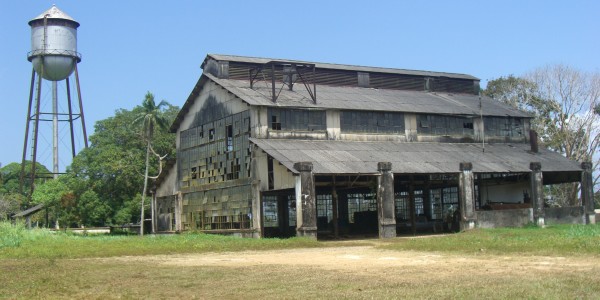It’s easy to forget just how fascinating manufacturing is. Nowadays, people think of assembly lines as commonplace and unremarkable, not giving a second thought to the fact that automated robots are building our products at a pace that humans could never hope to match. If you were to go back a few hundred years and explain the concept of motion control systems or servo motors to the general public, there’s a high probability that you would be burned at the stake for being a witch.
Considering that manufacturing itself is pretty remarkable, it should come as no surprise that there have been some amazing and peculiar occurrences throughout the history of manufacturing and production – like the existence an Amazonian town built by an iconic American industrialist for the purpose of securing a consistent source of natural rubber.
Henry Ford
Henry Ford is certainly a big name in U.S. history, but he’s also a big name in manufacturing in general. While Ford didn’t invent the assembly line, he did develop techniques that optimized assembly and made mass production possible. Most people recognize the Ford name and know about his contributions to production and manufacturing, but many people are unaware that he built his own town in the middle of the Amazon rain forest.
Fordlândia
The town was called Fordlândia, which is Portuguese for “Ford-land”. The town was built in 1928, and was meant to provide Ford a source of rubber for his automobile tires. Ford had worked out a deal with the Brazlian government to build the town, but due to a number of issues, the project resulted in complete and total failure.
Fordlândia was built on rocky and infertile land, and the rubber trees were planted too close together. The American managers didn’t know anything about tropical agriculture,and they didn’t listen to local workers who might have known more.
The local workers weren’t happy, either. The rules of the town were very strict. Workers were forced to lie in American-style houses and to eat American food. Managers checked up on them to make sure they kept their homes tidy. Women, alcohol, tobacco, and sports were forbidden. Workers staged a demonstration in the cafeteria, and the Brazilian government sent in the army to put down the revolt.
The town struggled on for a while, but never produced rubber. The rise of synthetic rubber made the crop less important to auto manufacturers. Fordlândia was mostly abandoned in 1934.
Ultimately, Fordlândia was sold by Ford’s grandsons for a loss of what amounts to roughly $208 million in today’s market.
Ford was a visionary in the realm of manufacturing, but he wasn’t quite as gifted in rubber farming.
